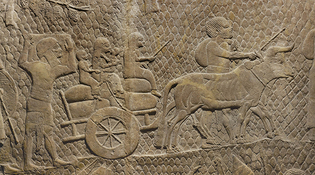 loading
loading
FindingsDon’t blame it on the MedesA new theory about the collapse of the Neo-Assyrian empire.  The British MuseumView full imageA team of scientists has solved a millennium-old mystery: what caused the sudden collapse of the Neo-Assyrian Empire, the most powerful civilization of its time? Spanning an area that included Iran and Syria, and from western Iraq to the Mediterranean and Egypt, the Assyrian empire was larger than any before and lasted for 300 years (911 to 609 BCE). In 612 BCE the capital, Nineveh, was attacked by a combined army of Babylonians and Medes. The city fell; the empire soon followed. Even stranger, the city and most of the territory were never reoccupied. “It was as if the Roman Empire collapsed, and there was no Rome thereafter,” says Harvey Weiss, a professor of Near Eastern archeology and environmental studies. “The speed and the completeness of the collapse has been referred to as a historical scandal.” Weiss was part of a research collaboration that has identified an underlying cause of the empire’s decline: a megadrought that spanned decades. By studying stalagmites from a cave in northeast Iraq, the team tracked the region’s climate over more than 2,000 years. Oxygen isotopes in the stalagmites revealed changes in precipitation and temperature; uranium deposits recorded the passage of time. Previously, no one knew climate change had a role in the empire’s collapse. But Assyrian agriculture—predominantly cereal-based—relied on precipitation, not irrigation. The long, intense drought would have radically destabilized the empire. “What lessons can we learn from this?” Weiss asks. “The ancient situations were unavoidable and disastrous. The modern situations are anthropogenic—and avoidable.”
The comment period has expired.
|
|